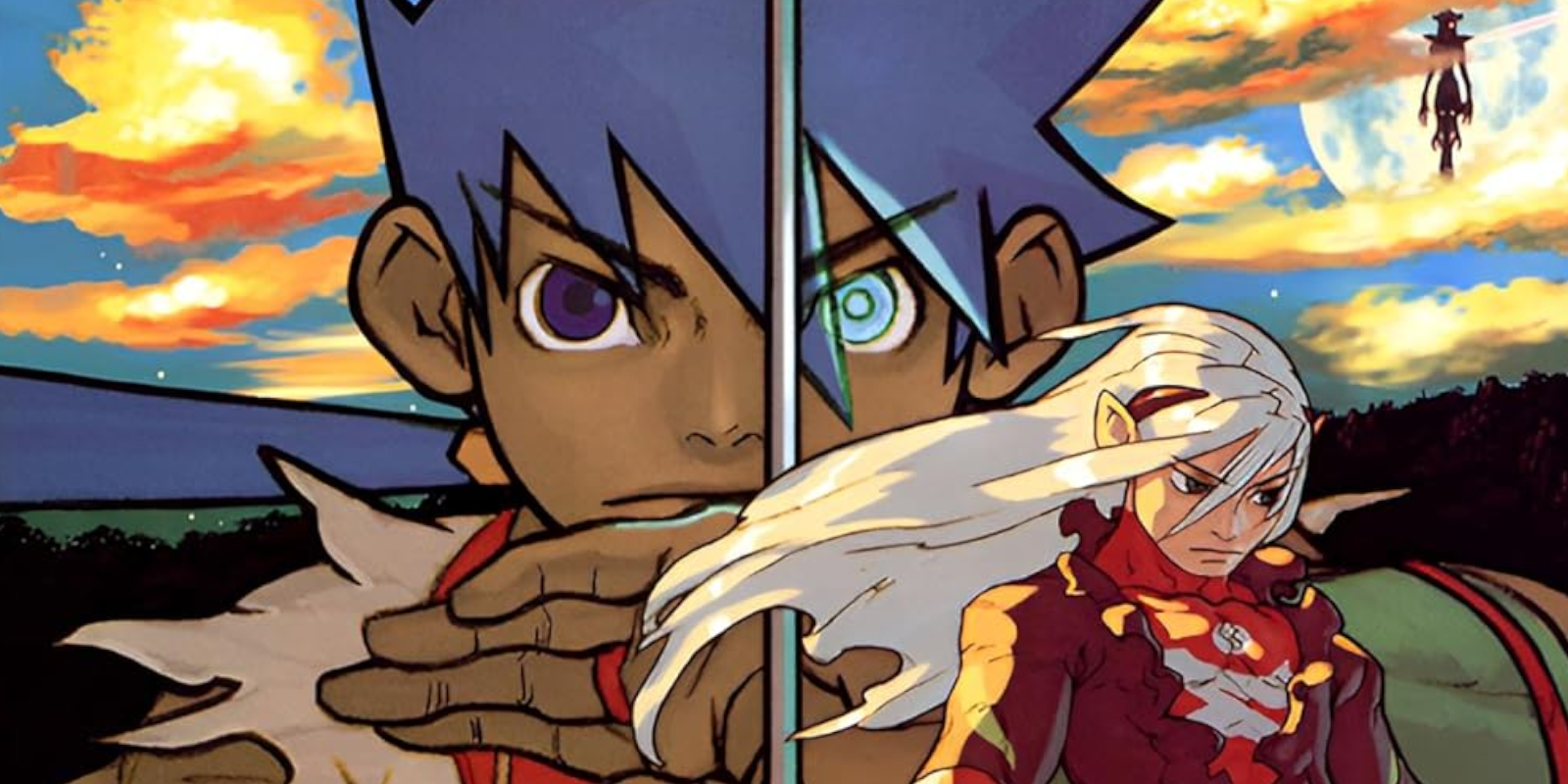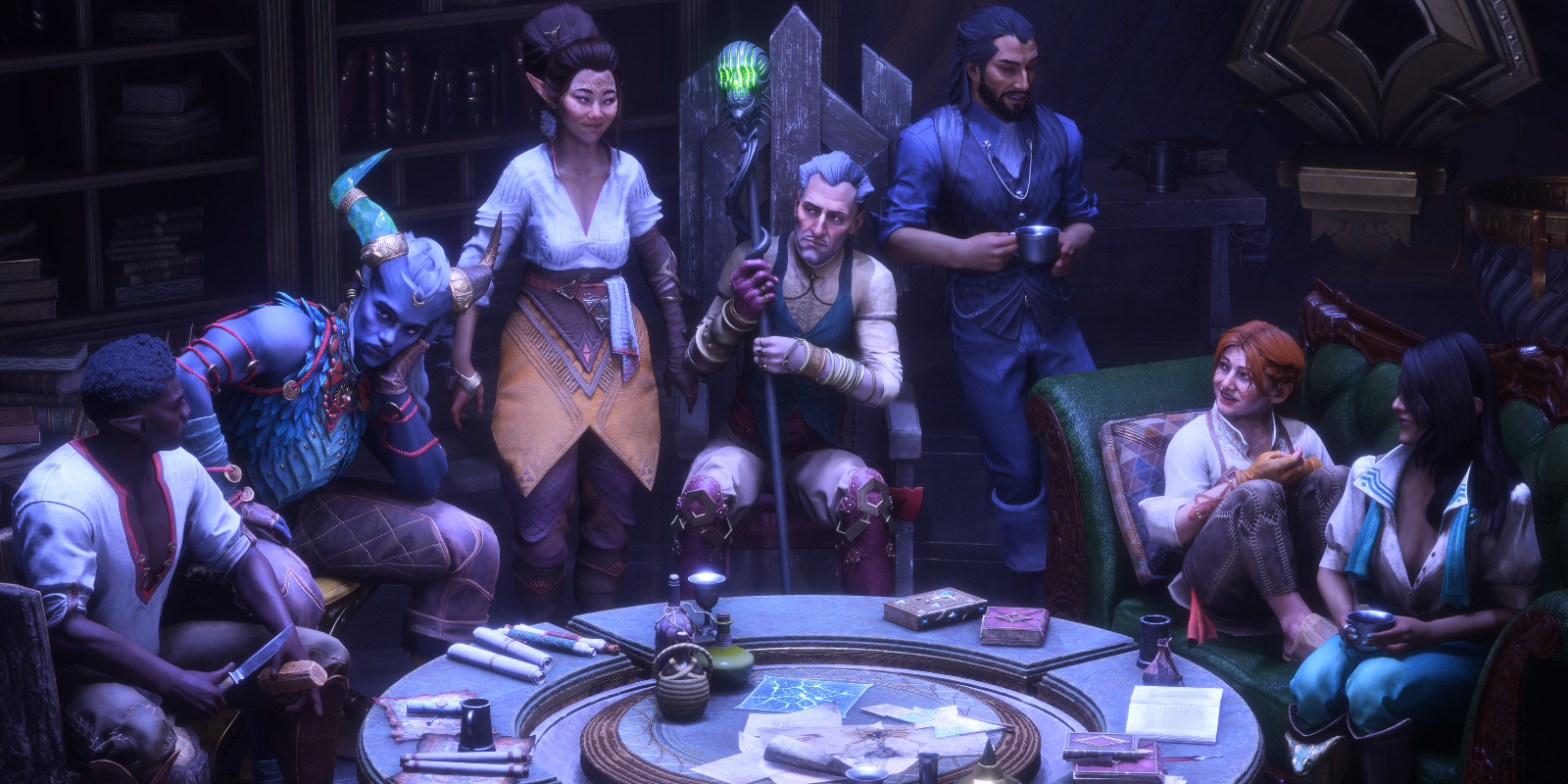If you’ve been following me on Twitch, you know we finally wrapped up the massive, 2.5-day playthrough of “Avowed,” the latest RPG from the minds at Obsidian Entertainment.
I hadn’t planned on streaming “Avowed.” I hadn’t even expected much. While the previews looked fine, and I’m very well aware of Obsidian’s reputation for quality, nothing about it seemed to hook me, and I went in wholly unfamiliar with “Pillars of Eternity,” the CRPG franchise which serves as the setting for “Avowed.” I went into this one out of a blind devotion to Obsidian, not to mention the ease of access thanks to Game Pass, and I’m ultimately delighted I did. The tl;dr for “Avowed” is that Obsidian more or less knocked this one out of the park, but some odd quibbles keep it just shy of perfection.
Fallout: New Paradis
In “Avowed,” players step into the role of The Envoy, a representative sent to the untamed Living Lands and its de facto capital city, Paradis, at the behest of the unnamed and unseen Emperor of the kingdom of Aedyr. You’ve been explicitly set to investigate and stop a soul plague known as The Dreamscourge, which is turning living creatures into mushroom-infested zombies.
You also arrive to find the Living Lands in turmoil; Aedyr has caused a massive upset by forcibly placing its foot on Paradis’ throat. Now Aedyr’s vicious Steel Garrote, led by the zealous Lödwyn (who you are either vaguely aware of or used to hook up with, depending on where you took your character’s backstory), are running rampant across the Living Lands, seeking to end the Dreamscourge by burning it out.
Narratively, there is one additional wrinkle to your plot: you’re a Godlike, a being touched by a God at birth, so you stand out in the crowd — literally. During the character creator, you choose Godlike markings your character has, ranging from discrete markings to massive organic growths that cover your entire head. You choose the markings, but they’re narratively required; even if you turn them off on your character model, the world still reacts to them.
Godlikes are becoming increasingly rare in the world, and you’re even rarer among them, because you don’t actually know who the God that you are inextricably tied to is. So you’ll be surprised to learn that you are, in fact, the Godlike of an unknown God of the Living Lands, who is finally able to reach out to you and plead for your help. And they give you one hell of an impetus to help them by helping to cure the Dreamscourge.
It’s not the most exciting plot on the surface, but I found myself surprised by the depth of “Avowed”‘s story. There is a lot of just straight-up politics in this game, as you find yourself discussing the fate of the Living Lands and what right Aedyr has to play a part in. Your role as the Aedyran Envoy does make for an interesting angle if you side with those in the Living Lands, too, as no one ever really believes you. After all, your fellow compatriots are on a bloody tear through the lands.
Nonetheless, I found “Avowed” and its world of Gods and Godlikes, devotees and agnostics, soldiers and ordinary people fascinating. I have to wonder how much that is impacted by my ignorance of the “Pillars of Eternity” franchise, a series of games I always meant to play but just never got around to. Several characters make references to a war that I believe was the finale of one of the “PoE” games, but it doesn’t seem as though you need to have played those games to truly get “Avowed.”
Swords and Spells and Lots of Wandering
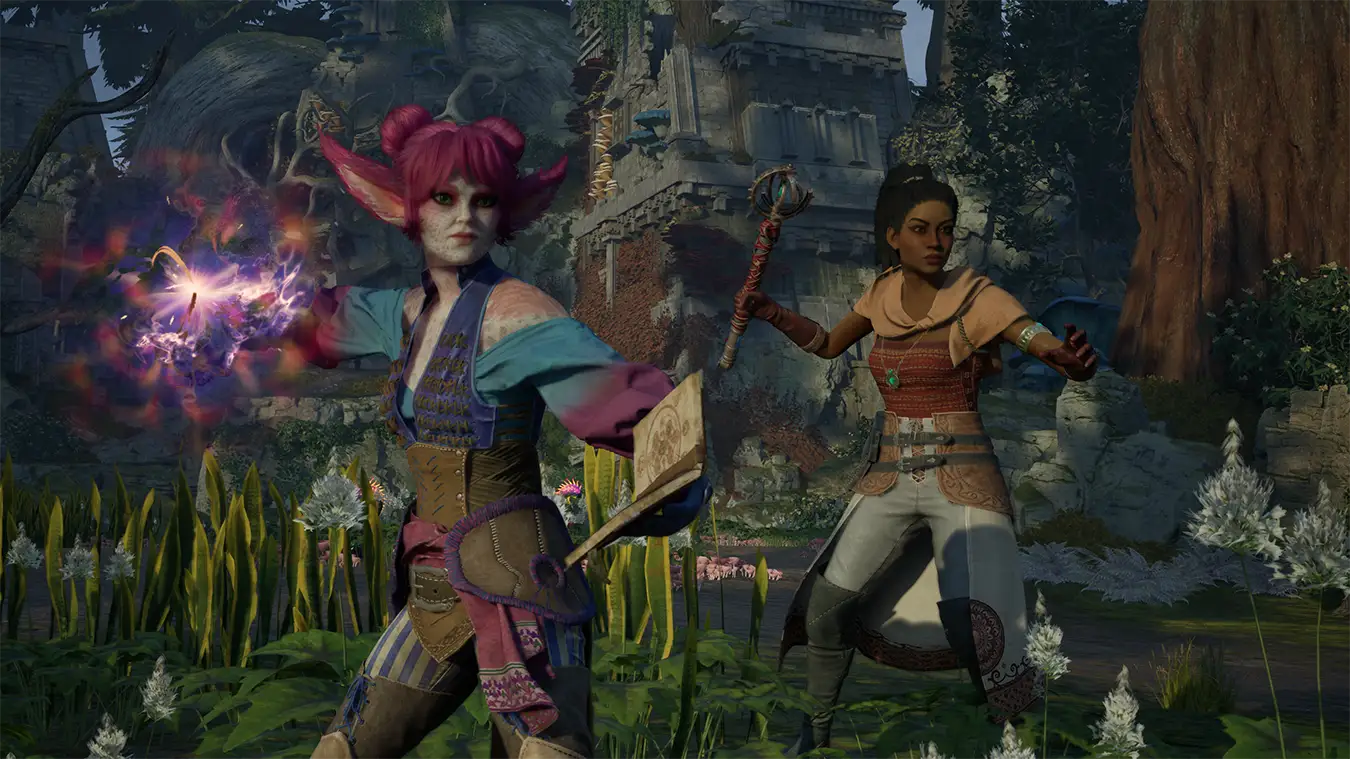
“Avowed” follows a pretty standard gameplay loop that you’ll be familiar with if you played an “Elder Scrolls” title or Obsidian’s later games. You’ll be dumped into a massive open zone with a map obscured by a fog of war and a handful of quest markers. Assemble your party, explore the map, complete quests, upgrade gear, face a major plot encounter, and open up the gate to the next zone.
It is a tale as old as time, and “Avowed” seems to live by the philosophy that if it isn’t broke, you shouldn’t fix it. There are ultimately three classes in “Avowed,” though you can easily mix and match abilities. My run was my typical Maxwell character archetype: a Paladin-ish type who favors two-handed swords and big damage, but isn’t afraid to embrace a little supernatural power. I had a pretty standard experience. The early game proved difficult, and the mid-game proved challenging, but by the third zone, I was mostly storming through areas and putting enemies down with thunderous zeal. By the endgame, I had a maxed-out greatsword that inflicted huge bars of stun, a rifle made of a magic rock that could one-shot most enemies, and had discovered the Warrior/Ranger ability combo of Barbarian Shout and Flurry of Blows, which let me melt even the most challenging bosses.
I didn’t play a lot with magic in my run, but I did immediately see the appeal. After hearing about how broken it was from a couple of friends, I made a new character to experiment with the Wizard spell tree and, yeah, it’s horrendously overpowered. Even at the early levels, spells bounce around the battlefield, soaking enemies in Area of Effect damage and stunlocking even the most damaging enemies, all while buffs make you immovable, and drain spells keep your health topped off. If you want to feel less Godlike and more God, magic is the way to go.
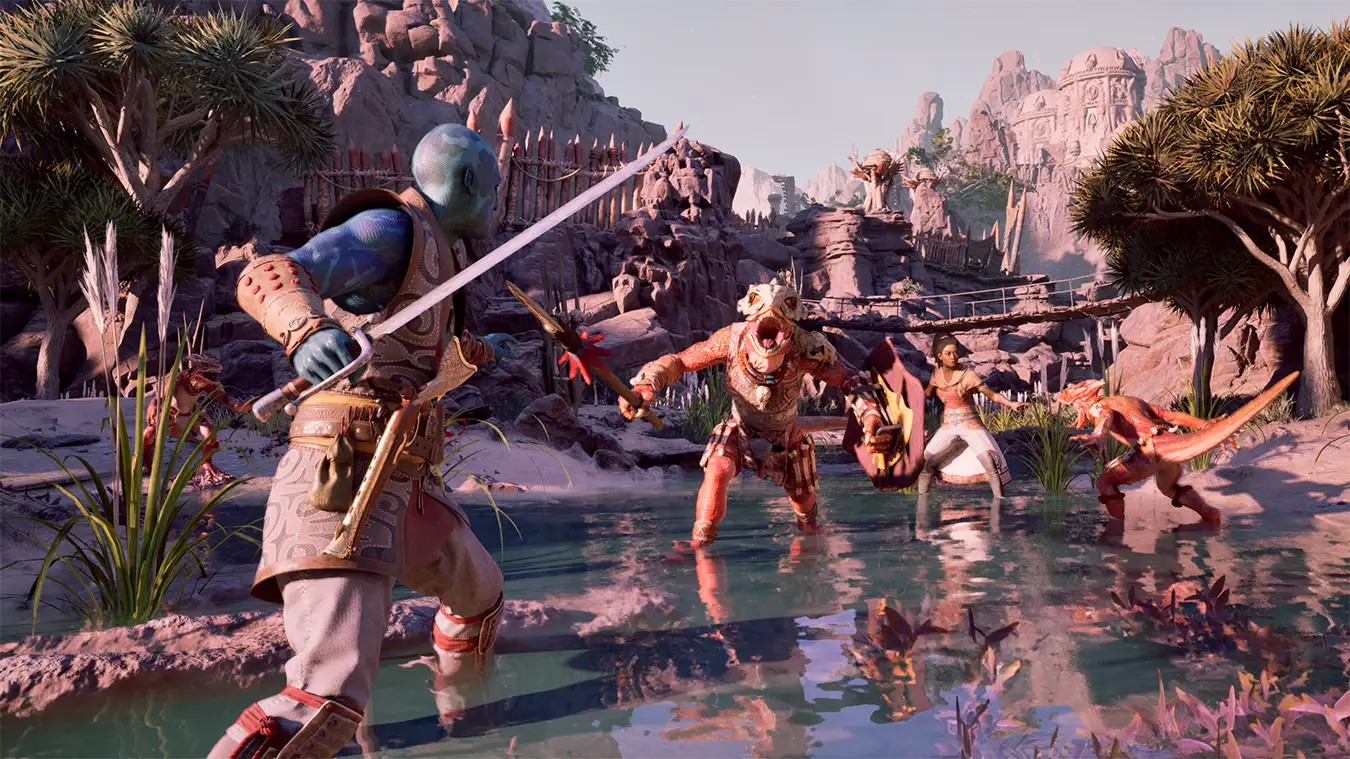
Regardless of how the trees break down, the gameplay is extremely streamlined, which does feel detrimental. The weakness of your chosen class is meant to be made up by your party members, of which you only have four: Kai (DPS tank), Marius (a stealthy ranger), Giatta (healer), and Yatzli (DPS wizard). It doesn’t seem to matter what class I played with, though, as I was solving most problems on my own by the end. Once I had maxed out armor and a sack filled with items that restored my full health bar and buffed my strength, I never really felt that concerned about death. The one endgame death I suffered was because there were so many mobs on screen that I misread the enemy falling as their death animation; had fewer xaurips been on screen, it wouldn’t have happened.
The party members factor more heavily into the game’s narrative, as each has a stake in the future of the Living Lands. Unique for this style of game, you’ll only have companion quests for Kai and Marius; Giatta and Yatzli’s character development is baked into the main questline, so you’ll experience the breadth of their arcs naturally. I found most of the character elements to be really good, the sole exception being Marius. I get it; he’s supposed to be a gruff, hard-to-trust loner. But he’s written too far to the extreme. Even after his companion quest, even after he’s softened up a bit, I still found him to be insufferable.
None of that makes up for how the party dynamic worked out for my playthough, though, as it seemed like early party members were quickly replaced with new ones. Sure, Kai was great for the early game, but Giatta’s heals and Yatzli’s explosive magic made them obvious picks for the party throughout the entire back half of the game. Outside of a few plot-relevant moments, Kai and Marius spend the end of “Avowed” hanging out at my camp, occasionally making snide comments as I went back and forth between the upgrade anvil and the cooking fire, but that’s it.
Another Gorgeous Obsidian Game
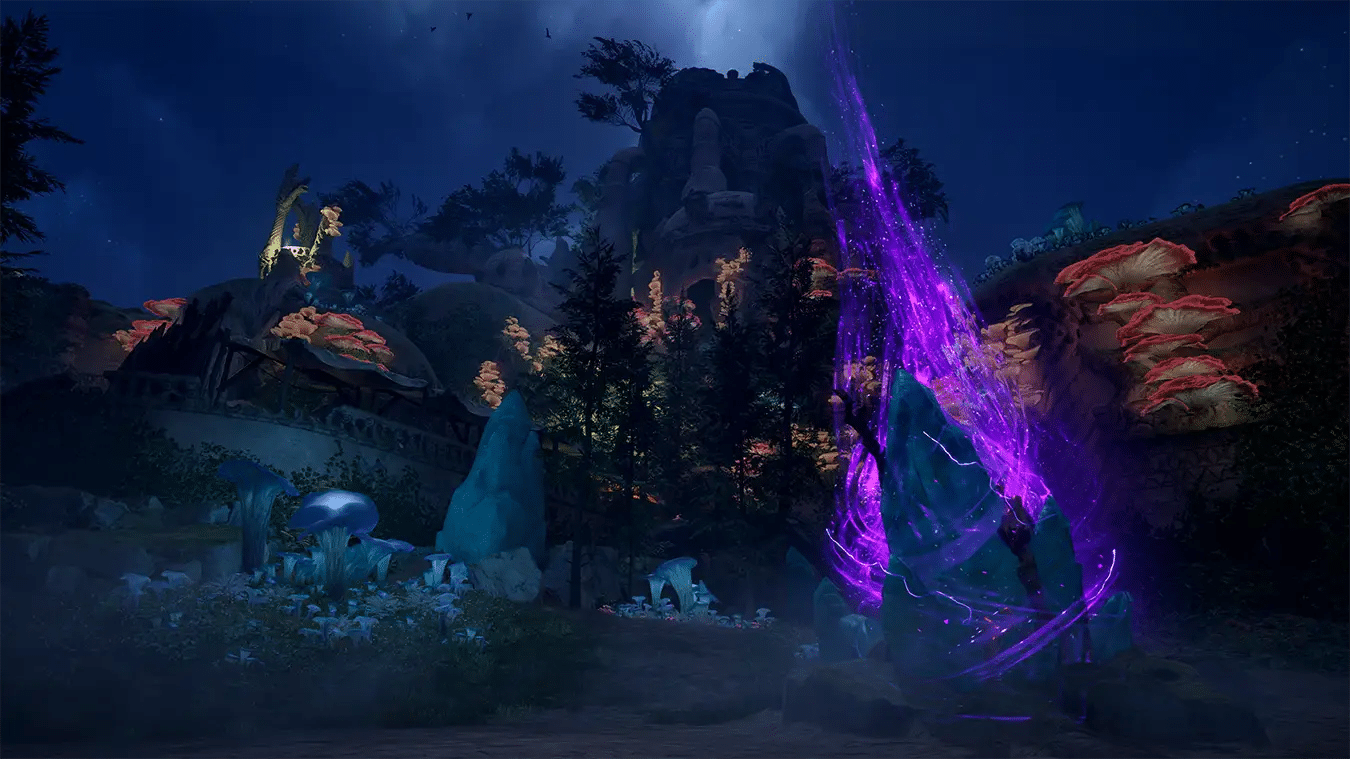
Before we dive into spoiler territory, I did want to highlight the overall style and aesthetic of “Avowed.” If you were expecting another barren wasteland like “Fallout: New Vegas” or a bizarre, otherworldly planet like “The Outer Worlds,” you’ll be out of luck. “Avowed” prides itself on its shockingly low-key worlds, but in a good way.
Each of the four zones you’ll enter ultimately represents a unique biome: a verdant, flowering paradise, a mucky, dim swamp, a harsh, arid desert, and a horrying, lava-soaked hell. As a result, you start the game in an almost idyllic zone, traversing deeper and deeper into…well, hell, until you find the game’s final zone, a weird and idyllic, otherworldly area.
The world itself is gorgeous. There’s a ton to explore, and plenty to do, without it feeling too much like busywork. Quests will lead you on a pretty good loop throughout the world, but the best secrets are still hidden away, so exploration is rewarded.
There are some noticeable Obsidian quirks to the graphics. You’ll recognize a lot of facial animations in conversation, as players seem to stare just over your shoulder and waggle their jaw at you. It stood out to me immediately, but by the time the story was up and running, I was so engrossed that I didn’t notice anymore.
I stuck with the default first-person view, so I didn’t see a lot of my character outside of the occasional conversation shot. But I did see a lot of my party members, and their designs are genuinely top-tier. From the scaly Kai to the scarred-yet-furry Yatzli, a lot of effort went into making these various races look and feel unique. Every character’s personality shines through, making them all feel like they belong in the wild and terrifying Living Lands.
I played the game primarily on my laptop — a Lenovo IdeaPad Gaming 3 with a Ryzen 7 7735HS, GeForce RTX 4050, and 16 GB of RAM. I played most of the game around medium to low settings because I was streaming at the same time, but it honestly looked great. I also played a few hours on Xbox Series X. The console version looked roughly identical to what I saw on PC, and felt just as good. You should find plenty of enjoyment out of this one, no matter where you play it.
Warning: Endgame spoilers for “Avowed” follow.
Everyone Loves the Envoy — But Should They?

Unfortunately, “Avowed” is not a perfect game, but I can’t really discuss it without spoiling some key plot details. Ultimately, I found myself a little astonished, as the issues I encountered were things Obsidian was praised for not having in previous games.
For starters, while I did truly enjoy “Avowed”‘s core narrative, it feels a bit on rails. A lot of things are handwaved simply by me being an Aedyran envoy; the people of the Living Lands don’t respect my people or recognize my kingdom’s authority, but for some reason they’re increasingly willing to cede to my judgment.
Now, you could write that off as a side effect of me being a stalwart heroic type, but my Maxwell character has enough wiggle room to do some genuinely despicable things. I cut off the Adra in Shatterscarp, which randomly killed several hundred people. When Thirdborn’s aging hero wanted to kill himself rather than become Dreamscourged, I gleefully handed him the means to do so (AND chose not to tell the village he’s actually a fraud!) When the Pargren history had the opportunity to finally be released to the public, I chose to let it remain locked away, where no one could read it. People told me they were displeased, but nobody seemed to care aside from one merchant raising their prices a bit (which, I assure you, was not a hurdle at all by the late game).
This goes doubly so for my companions. You only have four, so there’s not a ton of wiggle room for your companions to be picky, I guess. They’re all very opinionated, and I like that. There’s also not a clear divide; oftentimes, only one party member would be a dissenting voice in an encounter. But the problem is they all end their argument with the same sentiment: “But you’re awesome, and we trust you, so we’ll do whatever you tell us to do.”
I don’t get it. In the grand scheme of the game’s narrative, I have known these people…maybe a week? Perhaps a month, if every time I rest in camp, it really does indicate I slept for the night. But whether I was discussing what we should do with the tantrum-throwing, child-like God whom I was connected to, the violent Death Knight who is slaughtering entire villages, or even the fate of the Living Lands themselves, my party was willing to voice serious concerns, and then just go along with whatever I said (the sole exception, which I did not personally see, being if your character sides with the Steel Garrote at the end, which causes the party to break ties with you finally).
Compare this to Obsidian’s past efforts. If you allied with Caesar’s Legion in “New Vegas,” Boone would turn on you. If you killed Parvatti’s girlfriend in “The Outer Worlds,” she’d leave the ship, and you’d get the most depressing ending screen in gaming history, where you’re told she all but vanished from history. It’s weird that your party’s reactions to your choices have so little weight when they’re all so perfectly positioned to reflect the entirety of the world.
Avowed Can’t Keep Its Narrative in Line
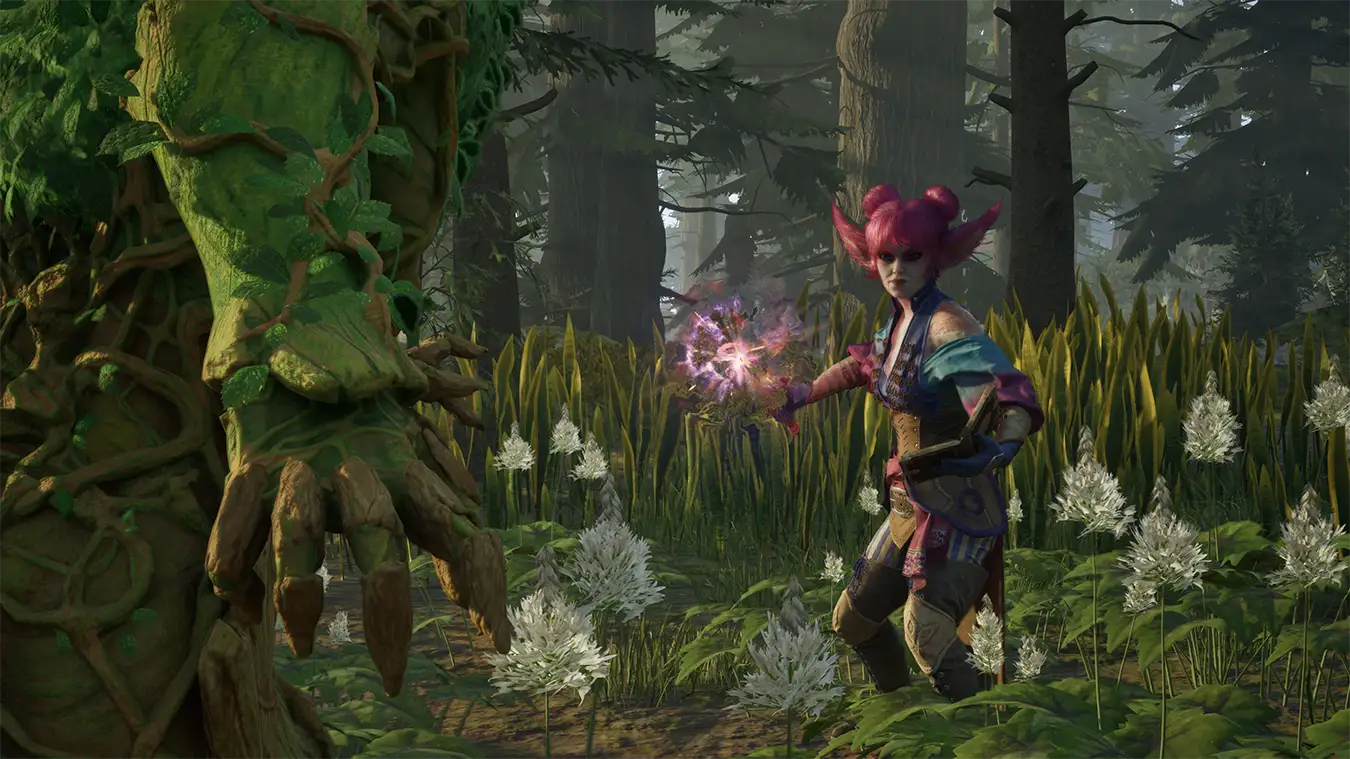
But perhaps the most egregious narrative decisions lie in two of the game’s most pivotal characters: the Death Knight, Lödwyn (played to perfection by Debra Wilson, whom I am always excited to hear or see) and the infantile God of the Living Lands, Sapadal.
Sapadal is ultimately the driving force for the game. Their voice appears to you early on, and much of the game is about your relationship to them, and how the world around you reacts to it. The driving conflict of the game is how you should handle Sapadal, especially once you learn that they are responsible for the Dreamscourge you have been sent to cure. Sapadal insists that the Dreamscourge is not intentional, and all signs point to it being the result of their lashing out as they are tormented and imprisoned. However, others, including the spiteful God Woedica, paint a picture of a toddler throwing a tantrum.
In my playthrough, I chose to stick to my guns and free Sapadal. Everyone in the world was raising objections to this. But I did it anyway, at which point Sapadal…basically exited the game. Seriously. I got a new ability, and I had the option to ask them their opinions on how the Living Lands should carry themselves. And yet, Sapadal itself was not a factor in the finale. No grand appearance to ward off Woedica, no last-minute intervention. Forty-five hours ago, Sapadal revived me from death so that I may eventually free them from prison. Now, as I fight a Death Knight for the fate of the free world, they’re suspiciously quiet.
This is what I’m referring to when I say I have come to expect better from Obsidian. The final skirmish of “Avowed,” where you return to the game’s opening area to fight the invading remnants of the Steel Garrote (or, if you’re an asshole, siding with Lödwyn and conquering the Living Lands for yourself). It should feel like “Fallout: New Vegas,” right? Where every faction arrives at the Hoover Dam, and how you ended things with them determines whose side they’re on?
It’s just not, though. The people here are largely inconsequential NPCs who just remind me I helped them. Why yes, I did get that guy Luminous Adra three continents ago. Oh yes, I did help the local bath house madam secure illegal birth control. But they’re not really helping in any meaningful way. I got a few items, and I technically got a shortcut, but it helped me bypass maybe five soldiers — which I was able to pretty easily dispatch.
Where are all the other people I helped? There were quite a few of them outside of town before I made the big decision about helping the Living Lands, but as far as I noticed, they didn’t come in to help. That one Ogre I helped cure himself showed up, and that was pretty cool, but he basically stopped at the entrance. Glaringly absent is the assassin who killed me as soon as I finished the game’s tutorial. I notably spared his life, a move which royally pissed off literally everybody my character knows, but neither he nor his faction of rebels are here. The only payoff I got for sparing his life was that I didn’t have to fight his friends in the next zone, instead coasting my way to the good ending of a side quest where they had stolen food from starving farmers.
It may be for the best that those allies didn’t factor in, though. “Avowed” seems to struggle with the narrative order, and I saw this no better exemplified than when I managed to royally screw up the main questline’s order in the penultimate zone, Galawain’s Tusks. I was supposed to approach an old Pargrun Tower, which I was told was the path to the Garden. I didn’t trust the game not to start throwing me into some kind of endgame nonsense, so I opted to instead go ahead and explore the Tusks. This led to one of the most bizarre things in the game.
See, while exploring, I found Captain Aelfyr of the Steel Garrote. In a previous area, I had encountered her having slaughtered everyone at a gate. I had been struggling through the area at that point, so I opted to play along and spare her. I’ll almost certainly kill her later, I reasoned.
I was right. Aelfyr was in the early stages of Dreamscourge, but she revealed something surprising: she was waiting outside of a nearby cave system for Lödwyn and the rest of the Steel Garrote. This wasn’t hugely surprising. An earlier side mission had involved me stumbling upon a Steel Garrote staging area behind a waterfall, and killing them had made my life easier at the end of that section, so I reasoned the game was pulling off its old tricks.
It wasn’t. After fighting Aelfyr, I ventured into the caves and wandered around, fighting a lot of Steel Garrote. “This is weird,” I found myself thinking. It didn’t feel like a sidequest after a certain point, but I was too far in to back down now. Sure enough, I soon found myself in what was supposed to be an epic battle with Lödwyn, and after the fight, I got the weirdest quest pop-up: “The bridge to the Garden is gone. Find another way.”
Gone? How the hell do I know that? I went back to the tower and, sure enough, once the roots blocking the entrance magically disappeared, I found the Garden in the distance, a bridge that was gone, and a note telling me someone who was previously there knew about another entrance, but was now stranded in the caves.
It’s weird. “Fallout: New Vegas” was celebrated for how it handled its quest pathing. If you did something out of order, the game managed to compensate for it fairly reasonably. Killed the wrong person? They probably had a note. If the game wanted you to go somewhere specific, multiple quests would lead to that one point. But “Avowed” didn’t know how to handle me going through its penultimate area out of order, and that really surprised me.
You may think that’s as bad as it gets, but remember what I said before? That’s not the final fight with Lödwyn. Despite allegedly, definitely, for sure killing her in Galawain’s Tusks, she shows back up for the finale with the added gimmick that I have to shatter her belief in Woedica so she’ll stop resurrecting. I was just a few points shy of talking her into instantly dying, so I had to knock down three health bars in a fight where I wasn’t taking that much damage, but she kept teleporting just out of my range.
It wasn’t a bad fight, but it was a disappointing one. The huge, climactic, final fight of “Avowed,” a moment almost 64 hours in the making, is against a character I’ve already beaten, surrounded by allies who aren’t doing anything, in the name of a God who doesn’t help out. It’s honestly a huge letdown for a sequence that was building itself up as the grand finale to determine the future of the Living Lands. It’s made worse when the final blow on Lödwyn almost immediately cuts to a slideshow of illustrations and narration explaining what happened next, with no real opportunity to savor the victory. Perhaps they knew you’d already savored that victory not five hours earlier and just wanted to get you to the credits faster.
Avowed Rating: 7.5/10
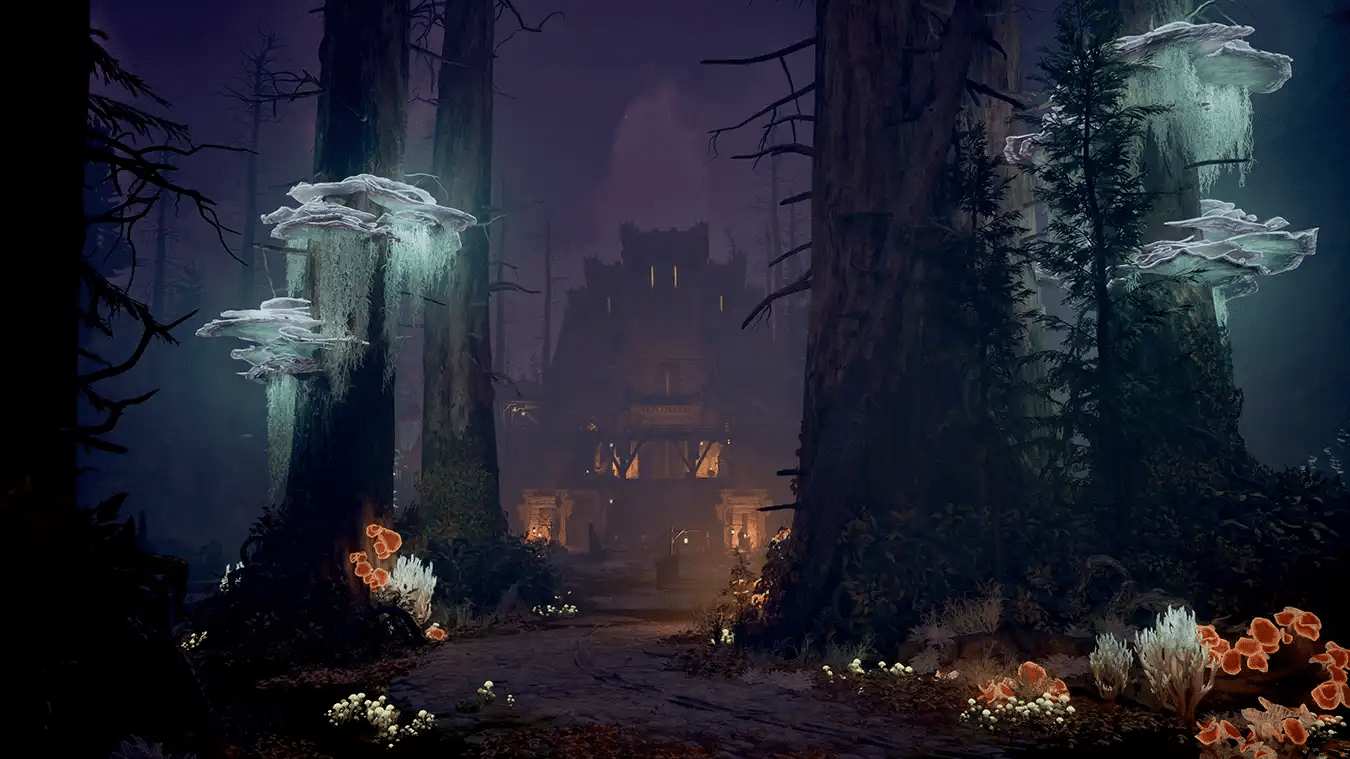
I can’t stress enough that the weird quirks of “Avowed” didn’t deter me from it. I still found myself engaged in the story, and while the odd quirks of the narrative did take me out of it occasionally, they weren’t enough to detract. The ending didn’t necessarily land for me, but the journey was enough that I can safely say I like the game.
I feel like “Avowed” is a perfect stepping stone to start off a franchise, and an excellent complement to Obsidian’s other ongoing franchises. “Avowed” is far from perfect; the replay value is relatively low, and I don’t think there’s much I didn’t do the first time around, but I’m still thinking fondly of my time with the game. “Avowed” is an incredible RPG experience, and yet another feather in Xbox’s esteemed Game Pass cap.
Discover more from Homeworld
Subscribe to get the latest posts sent to your email.


